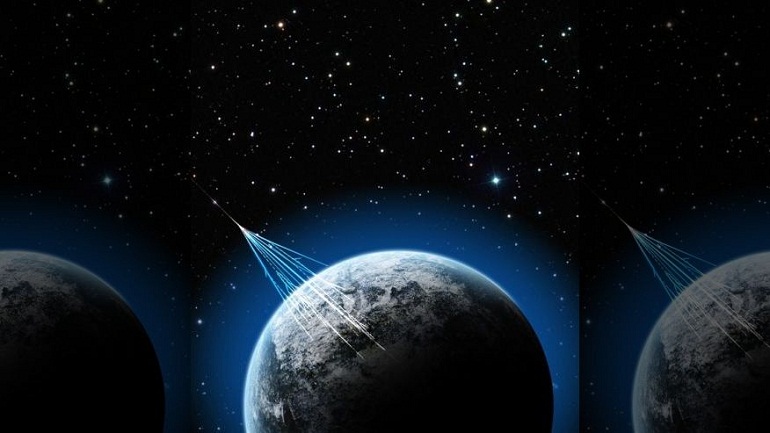Want to study high-energy particles streaming through the cosmos at nearly the speed of light? There’s an app for that.
It’s called the Distributed Electronic Cosmic-Ray Observatory (DECO), and unlike the huge, multimillion-dollar particle detectors housed in labs, DECO allows smartphone owners to turn their phone into a pocket-size cosmic-ray particle detector by downloading two apps and sticking a piece of duct tape over the camera lens to block out light particles.
“The apps basically transform the phone into a high-energy particle detector,” Justin Vandenbroucke, a physics professor at the University of Wisconsin-Madison and creator of the apps, said in a statement. “It uses the same principles as these very large experiments.” [In Images: Utah’s Cosmic Ray-Finding Telescope]
Cosmic rays are still a mystery to astrophysicists. There’s a huge number of them flying through the cosmos and astronomers think they come from powerful forces like black holes and exploding supernovas.
Waves of cosmic rays are constantly breaking against the Earth’s atmosphere. When cosmic rays rain down on the planet, they release a flood of high-energy particles. Most of the particles are protons, but they also contain a cocktail of other particles, including electrons and heavy atomic nuclei, which are the dense centers of atoms consisting of protons and neutrons. Some scientists think these particles could reveal more about the mysterious dark matter that is thought to make up around 27 percent of the universe.
One type of particle found in cosmic rays is the muon. DECO can detect muons by taking advantage of the silicon chips embedded in smartphone cameras. Digital cameras produce images by recording the light particles that hit them, but when muon particles hit silicon in a camera, they give off an electric signal. This signal shows up as a pixel signature. DECO is designed to snap a picture every few seconds and scan for any particle pixel signatures. If pixel signatures are detected, then the app saves the photo and logs the image.
Muons are weakly interacting particles. They can pass through most materials like ceilings and walls, so a smartphone running the DECO app could capture particle information from anywhere. During his tests, Vandenbroucke ran the app during long-distance flights, since muons are easier to detect at high altitudes.
Smartphone apps cannot replace the sensitivity and precision of larger, more sophisticated particle detectors. Instead, DECO is geared more toward education and citizen science, Vandenbroucke said.
Read more: How to turn your smartphone into a cosmic-ray detector












Leave A Comment